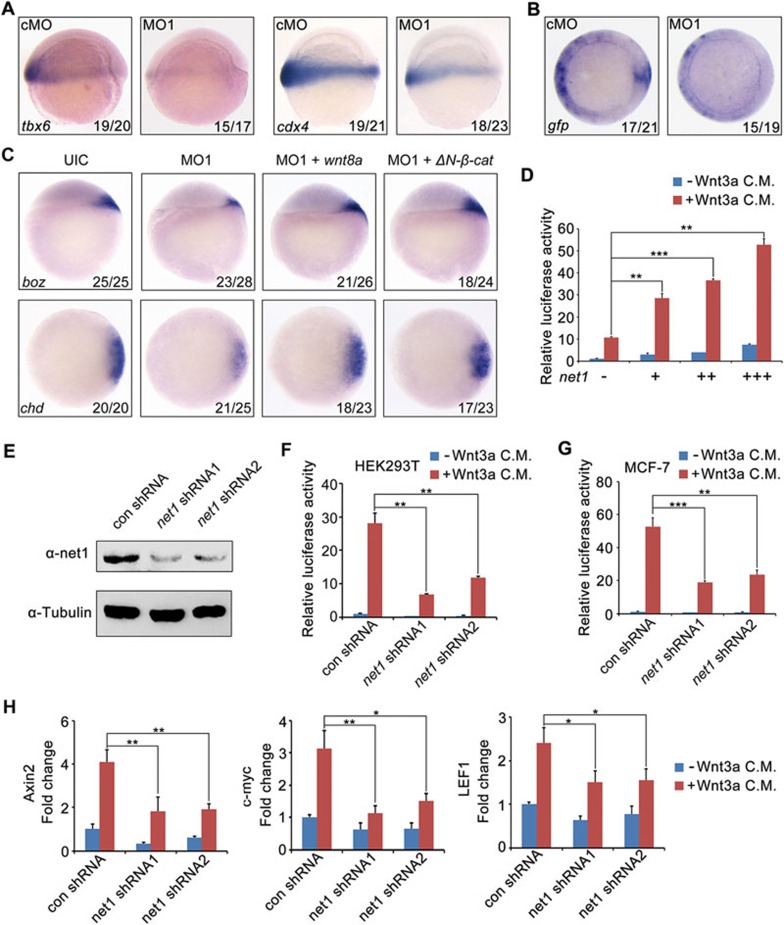Figure 2.
Net1 promotes Wnt/β-catenin signaling in zebrafish embryos and mammalian cells. (A) The expression of zygotic Wnt/β-catenin target gene tbx6 and cdx4 in 4 ng cMO or net1 MO1-injected embryos at shield stage. Lateral views with animal pole at the top. (B) Whole-mount in situ hybridization reveals the reduced expression of GFP in net1 MO1-injected TOPdGFP reporter transgenic zebrafish embryos. Embryos were injected with 4 ng cMO or net1 MO1 at the one-cell stage and harvested at shield stage for in situ hybridization. Animal views with dorsal side to the right. (C) Overexpression of wnt8a or ΔN-β-catenin rescues dorsal development defects in net1 morphants. Embryos were injected with indicated MOs or mRNAs at the one-cell stage and harvested at shield stage for in situ hybridization with boz and chd probes. Injection doses: cMO, 4 ng; net1 MO1, 4 ng; wnt8a mRNA, 10 pg; ΔN-β-catenin mRNA, 100 pg. (D) Overexpression of Net1 in HEK293T cells enhances super-TOPFlash luciferase activity in response to Wnt3a. HEK293T cells co-transfected with the super-TOPFlash luciferase reporter and increasing amounts of net1 expression plasmids were treated with or without Wnt3a CM for 12 h, then harvested for luciferase assays. **P < 0.01; ***P < 0.001, Student's t-test. (E) net1 shRNA constructs efficiently knockdown endogenous human net1 expression. HEK293T cells were transfected with the indicated shRNA plasmids and harvested 48 h after transfection for western blot analyses. (F and G) net1 knockdown in HEK293T (F) and MCF-7 cells (G) decreases Wnt3a-induced super-TOPFlash luciferase activity. **P < 0.01; ***P < 0.001, Student's t-test. (H) net1 knockdown in HEK293T cells inhibits the expression of Axin2, c-myc and LEF1. HEK293T cells transfected with the indicated plasmids were treated with or without Wnt3a CM for 12 h, and harvested for qRT-PCR analysis. *P < 0.05; **P < 0.01, Student's t-test.

